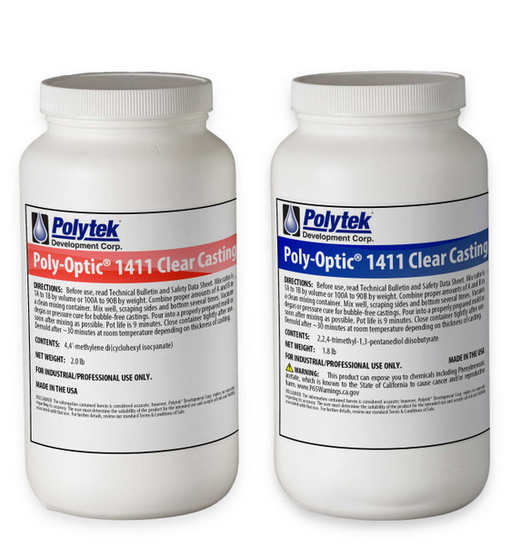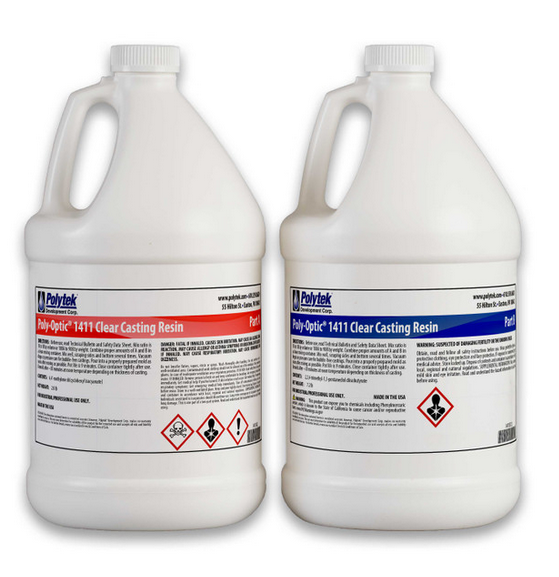1
/
of
1
Polytek
Poly-Optic® 1411 Clear Casting Resin
Poly-Optic® 1411 Clear Casting Resin
Regular price
$105.00 USD
Regular price
$0.00 USD
Sale price
$105.00 USD
Shipping calculated at checkout.
Quantity
10 in stock
Couldn't load pickup availability
Poly-Optic® 1411 Clear Casting Resin is a two-part, liquid polyurethane resin that cures (RTV) to a water-clear, Shore D80 plastic. This product has a simple 1A:1B mix ratio by volume.
Vacuum and/or pressure casting techniques are recommended for this product. Cure inhibition can occur when casting this resin in tin-cured silicone rubber molds – use a platinum-cured silicone rubber mold if working with silicones.
 WARNING: This product contains Phenylmercuric acetate (CAS 62-38-4) chemicals known to the State of California to cause reproductive harm. For more information, go to www.P65Warnings.ca.gov.
WARNING: This product contains Phenylmercuric acetate (CAS 62-38-4) chemicals known to the State of California to cause reproductive harm. For more information, go to www.P65Warnings.ca.gov.
FOR INDUSTRIAL/PROFESSIONAL USE ONLY.
Technical Specifications
Mix Ratio by Volume:1A:1B
Mix Ratio by Weight:100A:90B
Shore Hardness:D80
Pot Life:9 min.
Demold Time:30 min.
Cured Color:Water-Clear
Mixed Viscosity:600 cP
Specific Volume:25.8 in³/lb
Specific Gravity:1.07
Linear Shrinkage:0.0018 in/in
Elongation:7 %
Tensile Strength:6,083 psi
Elastic Modulus:133,956 psi
Flexural Modulus:250,992 psi
Flexural Strength, 5% Strain:8,478 psi
Heat Deflection Temp.:138°F
Max Exotherm:228°F
Notes":Demold time varies with thickness of casting and the amount of Poly-Optic Part X Accelerator added. The thinner the casting, the longer the demold time.
| Poly-Optic® 1411 | Components |
|---|---|
| 3.8-lb kit includes: | 2 lb of Poly-Optic® 1411 Part A (~1 quart) 1.8 lb of Poly-Optic® 1411 Part B (~1 quart) |
| 15.2-lb kit includes: | 8 lb of Poly-Optic® 1411 Part A (~1 gallon) 7.2 lb of Poly-Optic® 1411 Part B (~1 gallon) |
| 76-lb kit includes: | 40 lb of Poly-Optic® 1411 Part A (~5 gallons) 36 lb of Poly-Optic® 1411 Part B (~5 gallons) |
Share



- Choosing a selection results in a full page refresh.
- Opens in a new window.

